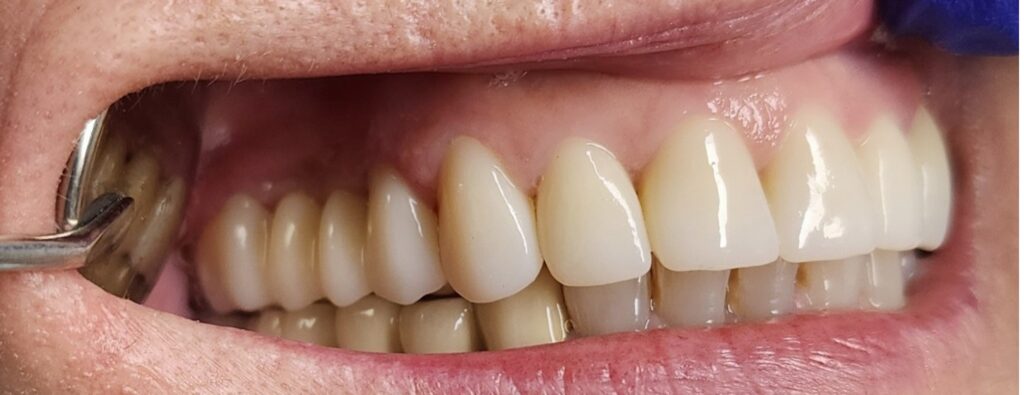
As awareness of oral health increases, more people are becoming concerned about missing teeth. Missing teeth not only affect eating but can also lead to additional oral health problems over time. Dental implants have become a popular solution for tooth restoration, offering a wide range of benefits and delivering results that closely resemble natural teeth. What are the advantages of dental implants, and what are the criteria for their success? Let’s explore!
Advantages of Dental Implants
Comfort and Aesthetics
Dental implants are almost identical to natural teeth in both function and appearance. They seamlessly blend with your natural teeth without causing any discomfort or foreign body sensation, helping to maintain oral hygiene effectively. Post-implantation, they offer comfort and aesthetic appeal.

Wide Applicability
With advancements in implant technology, the range of indications has expanded significantly, making implants suitable for almost all cases of missing teeth. Even in patients with insufficient alveolar bone, bone grafting techniques can facilitate dental implantation. Patients with complete edentulism (no teeth) can also benefit from dental implants to restore full-mouth functionality.
Protection of Adjacent Teeth
Dental implants do not require support from adjacent teeth for fixation, thus preserving the health of neighboring teeth. They prevent issues such as cavities and shifting that can result from missing teeth.

Stability and Durability
Dental implants are as stable and secure as natural teeth. They consist of a crown, gingiva, and abutment, and are anchored to the alveolar bone through osseointegration, making them highly durable and functionally efficient.
Alveolar Bone Preservation
Significant tooth loss can lead to alveolar bone resorption and atrophy. Dental implants help maintain alveolar bone by integrating directly into the bone, preventing its absorption and atrophy.

Scientific and Technological Advancements
Like natural teeth, dental implants transmit masticatory forces to the alveolar bone through the implant root, leveraging similar biomechanical principles. This ability to withstand substantial force enhances chewing efficiency.
Natural-Looking Teeth
Unlike other tooth restoration methods like dental crowns and removable dentures, dental implants offer a more natural look and feel, closely mimicking natural teeth.

Criteria for Successful Dental Implants
1. Gingivitis is controlled, with no implant-related infections.
2. No damage to the supporting tissues of adjacent teeth.
3. The implant remains stable under functional load without any mobility, with over 70% chewing efficiency.
4. Aesthetic appearance with no significant color difference from adjacent teeth.
5. No persistent or irreversible damage, pain, numbness, or abnormal sensations in the mandibular canal, maxillary sinus, or nasal floor post-implantation, with good overall patient comfort.
6. Vertical bone resorption does not exceed one-third of the implant height within the bone (as shown by standard radiographs). Horizontal bone resorption does not exceed one-third, with no implant loosening.
7. Radiographic examination shows no radiolucent areas around the implant-bone interface.
Failure to meet any of these criteria indicates an unsuccessful implant.
Post-Implant Care Instructions
1. Bite on a hemostatic cotton ball or gauze for 30 minutes post-surgery. Slight bloodstains in saliva for 24-48 hours post-surgery are normal. If saliva is completely red, indicating secondary bleeding, return to the clinic promptly.
2. Begin eating soft foods two hours post-surgery (after anesthesia dissipates). Avoid hot liquids, hard foods, and very hot or cold foods. Prefer soft, cool foods and avoid chewing in the surgical area to prevent swelling and pain.

3. Do not brush teeth or rinse vigorously within 24 hours post-surgery to avoid dislodging the blood clot and causing secondary bleeding.
4. Apply cold compresses for the first 24 hours and switch to warm compresses after 48 hours, each for about 10 minutes, 4-5 times daily, to reduce swelling and pain.
5. After 24 hours, maintain oral hygiene by rinsing and gentle brushing while protecting the wound to prevent it from reopening.
6. Avoid strenuous exercise post-surgery and refrain from smoking and drinking.

7. Post-surgical reactions vary; mild swelling and pain are normal. Follow prescribed anti-inflammatory and pain-relief medication. Swelling is more noticeable after bone grafting but usually subsides by the seventh day.
8. Stitches are typically removed 7-10 days post-surgery.
9. If a sinus lift procedure was performed, avoid pressure on the surgical side while sleeping, keep warm, avoid colds, and control sneezing and nose blowing. Avoid flying for five days post-surgery and swimming for one month.
Note from Oral Health Professionals:
Dental implantation is a precise surgical procedure requiring meticulous attention to detail. Inappropriate implantation can not only fail to restore teeth but also add to oral health burdens. For safety, always choose reputable medical institutions for dental implants and adhere strictly to post-operative care instructions.




Leave a Reply